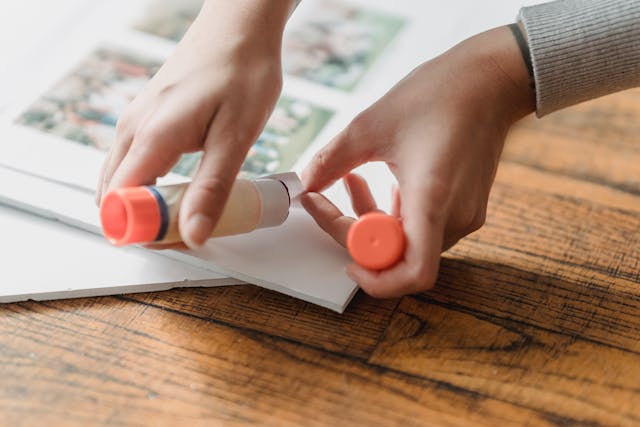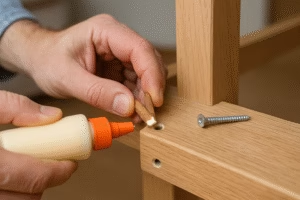Making your own glue at home can be an exciting and cost-effective project, whether you’re working on a craft project, school assignment, or even repairs. Many people are interested in how to make glue for different purposes, from simple homemade solutions to more advanced adhesives. In this article, we will walk you through various methods, tips, and techniques to show you how to make glue that is both effective and simple. Whether you’re a beginner or someone with more experience, we will explore how you can easily craft glue using items commonly found in your kitchen or crafting supplies.
Introduction: Why You Should Learn How to Make Glue at Home
If you’re wondering how to make glue, you’re in the right place. Crafting glue at home can be both fun and practical. Whether you’re working on arts and crafts, DIY repairs, or even school projects, knowing how to make glue is a skill that can save you money and ensure you always have the right adhesive on hand. From simple flour-based recipes to more specialized concoctions, there are multiple ways to create glue at home. Many homemade glues are also safer and non-toxic, which is perfect if you’re working with children or using glue for sensitive materials. In this guide, we’ll cover a variety of methods and answer some common questions about how to make glue that is both effective and versatile for any task.
How to Make Glue from Basic Ingredients
The most straightforward way to make glue at home is by using ingredients that are readily available in your kitchen. One of the most common types is flour-based glue, which has been used for centuries. This type of glue is perfect for basic crafts, paper projects, and light household tasks. Here’s how you can make glue from flour:
- Ingredients:
- 1 cup of flour
- 1/3 cup of water
- A pinch of salt
- Instructions:
- Mix the flour, salt, and water together in a bowl.
- Stir until the mixture becomes smooth and free of lumps.
- Heat the mixture in a saucepan over medium heat, stirring constantly.
- Once it thickens to a glue-like consistency, remove from heat and let it cool before using.
This is a simple recipe that shows you how to make glue using just a few ingredients that you probably already have at home.
How to Make Homemade Glue with Cornstarch
If you’re looking for a more durable and thicker glue, cornstarch is another ingredient you can use. This method is great for making a stronger adhesive that is perfect for heavier paper projects or more demanding crafts. Here’s how to make cornstarch glue:
- Ingredients:
- 2 tablespoons of cornstarch
- 1 cup of water
- 1 tablespoon of white vinegar (optional, for preservation)
- Instructions:
- Combine the cornstarch and water in a saucepan.
- Stir the mixture over low heat until it starts to thicken.
- Add vinegar to help preserve the glue.
- Remove the mixture from heat once it reaches the desired consistency.
This method is a great way to create a homemade glue that is a little more robust than the basic flour version and works well for various craft projects.
How to Make Glue with Gelatin: A Creative Option
Gelatin glue is another homemade adhesive option that is ideal for arts and crafts. It provides a unique texture and is effective for tasks such as bookbinding and scrapbooking. Here’s a simple method to show you how to make glue using gelatin:
- Ingredients:
- 1 tablespoon of gelatin powder
- 1/4 cup of cold water
- 1 tablespoon of glycerin
- Instructions:
- Sprinkle the gelatin over the cold water and let it bloom for a few minutes.
- Heat the mixture until the gelatin dissolves completely.
- Add the glycerin and stir until well combined.
- Let the glue cool to room temperature before using.
This gelatin-based glue is easy to make and has a unique, flexible consistency that can be useful in many applications.
How to Make Super Glue Dry Faster: Quick Drying Tips
If you’ve made your own super glue or are working with store-bought versions, you might want to know how to make super glue dry faster. While super glue generally dries quickly, there are some methods to accelerate the process:
- Use Baking Soda: A small amount of baking soda sprinkled on the glued surface will speed up the drying process.
- Apply Heat: A gentle heat source, like a hairdryer on low, can help speed up the curing of super glue.
By understanding these simple techniques, you can make your glue dry faster and ensure your projects are completed with minimal waiting time.
How to Make Glue from Milk: Casein Glue Recipe
Casein glue, made from milk, is a traditional adhesive used in woodworking and other heavy-duty projects. It is a natural glue that provides strong bonding power. Here’s how to make glue from milk:
- Ingredients:
- 1 cup of milk
- 1/4 cup of vinegar
- 1/2 teaspoon of baking soda
- Instructions:
- Heat the milk on the stove and add the vinegar.
- Stir until the milk curdles.
- Drain the liquid from the curds and mix the curds with baking soda.
- Stir until the mixture becomes a paste, then allow it to cool.
This glue is an eco-friendly option for those who prefer natural materials and need a more durable solution.
How to Make Glue Dry Faster
If you need to know how to make glue dry fast, there are a few universal tips that apply to nearly all types of homemade glues. Here are some methods to speed up the drying process:
- Increase Air Circulation: Use a fan or place your project in a well-ventilated area.
- Apply Thin Layers: A thinner layer of glue will dry faster than a thicker one.
- Use Heat Carefully: As mentioned earlier, applying heat (with a hairdryer or similar) can speed up drying.
These tips can help you ensure your glue dries quickly and doesn’t delay your project.
How Long Does Mod Podge Take to Dry?
While working with homemade glues is a great skill to have, Mod Podge is another popular adhesive that many people use. If you’re curious how long does Mod Podge take to dry, it generally takes about 15-20 minutes to dry to the touch. However, it’s best to let it sit for an hour or more for a complete cure, especially for decoupage or crafting projects.
How to Make Glue at Home for Kids’ Crafts
If you’re looking for kid-friendly glue recipes, knowing how to make glue that is non-toxic and safe is essential. Simple recipes like flour-based glue or cornstarch glue are perfect for children’s arts and crafts. You can also get creative and add food coloring or glitter to make the glue more fun for kids.
Conclusion: How to Make Glue at Home for Any Project
Now that you’ve learned various ways how to make glue, you can confidently create your own adhesives at home for crafts, repairs, and DIY projects. From simple flour glue to strong gelatin or casein glues, there’s a method for every need. Whether you’re looking to make your glue dry faster or create an eco-friendly solution, these tips and recipes will help you get the best results. With a little creativity and the right ingredients, you’ll be able to craft your own glue for any project. Happy gluing!

Share this:
- Click to share on Facebook (Opens in new window) Facebook
- Click to share on X (Opens in new window) X
- Click to share on LinkedIn (Opens in new window) LinkedIn
- Click to share on Reddit (Opens in new window) Reddit
- Click to share on X (Opens in new window) X
- Click to share on Threads (Opens in new window) Threads
- Click to share on WhatsApp (Opens in new window) WhatsApp




